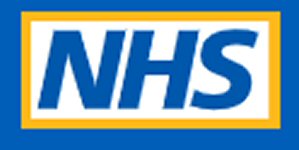Last Updated on 22/06/2025 by Admin
Understanding the Communication Challenges of Hearing Loss in Children
Enhancing Speech Development in Children with Hearing Loss

The impact of hearing loss on children’s speech development is profound, significantly hindering their ability to articulate sounds and construct words effectively. Typically, children learn to communicate by imitating the sounds they hear within their surroundings. However, when their auditory input is restricted, this vital learning process faces substantial obstacles. For example, young children with undiagnosed hearing loss may find it particularly challenging to generate specific consonant sounds or fail to develop the crucial phonological awareness required for reading and literacy. Without these foundational skills, they could encounter long-term difficulties in both communication and literacy, impacting their future educational opportunities.
Extensive research indicates that children with hearing loss frequently exhibit noticeable delays in achieving key speech milestones when compared to their hearing counterparts. Studies reveal that these children are often more likely to grapple with challenges in phonetic production and the structure of language, both of which are essential for effective communication. While speech therapy can provide significant benefits, its success heavily relies on early identification and intervention. Unfortunately, many children do not receive the critical support they need until they are well into their developmental years, leading to significant long-term educational and social consequences.
In addition to the technical aspects of speech development, the emotional ramifications cannot be overlooked. Children who encounter difficulties in effective communication may experience feelings of frustration and inadequacy, which in turn can undermine their confidence in their speaking abilities. Over time, these challenges can contribute to a negative self-image, complicating their social interactions and overall development. It is vital to address these emotional components to foster a healthier self-perception and improved social skills.
Overcoming Social Interaction Barriers for Children with Hearing Loss
Navigating social interactions can present significant challenges for children with hearing loss. The difficulties they face in comprehending spoken language often lead to substantial social isolation, as they may struggle to engage fully in conversations with their peers. This issue becomes especially apparent in noisy environments, such as classrooms or playgrounds, where background noise can drown out essential speech cues. Consequently, children with hearing loss may withdraw from social settings, fearing embarrassment or frustration when they are unable to contribute to discussions or respond appropriately.
Research indicates that children with hearing impairments often exhibit underdeveloped social skills. They may miss critical non-verbal cues, such as facial expressions and tone of voice, which are essential for effective communication. This lack of understanding can create barriers to forming friendships, leading to feelings of loneliness and exclusion. The profound impact of social isolation can be significant; studies have shown that children who struggle to form peer relationships frequently demonstrate higher levels of anxiety and depression.
To address these social challenges, parents and educators can play a crucial role in fostering inclusive environments where children with hearing loss feel supported and understood. Encouraging participation in group activities specifically designed to meet their needs can help bridge the gap between hearing and non-hearing peers, ultimately allowing for more meaningful social interactions that promote inclusion and belonging.
Transforming Family Dynamics Affected by Hearing Loss
The presence of hearing loss in a child can fundamentally reshape family dynamics, introducing unique communication barriers that may lead to frustration and misunderstandings. Families often encounter difficulties in sharing daily experiences or discussing important events due to these barriers. Parents may struggle to engage their children in conversations, resulting in feelings of distance or disconnection within the family unit.
Effective communication within the family is crucial for emotional bonding. Hearing loss can disrupt the natural flow of dialogue, leading to isolation for both the child and the parents. For instance, a child may not fully comprehend family discussions, resulting in misinterpretations or feelings of exclusion from family activities. Additionally, parents may grapple with feelings of guilt or frustration when they find it challenging to communicate effectively with their child, which can negatively affect their emotional well-being.
To alleviate these challenges, families can explore various communication techniques tailored to their specific situation, such as learning sign language or using visual aids. Strengthening familial communication not only enhances emotional bonds but also supports the child’s overall development. Research indicates that families who actively engage in adaptive communication strategies tend to foster more resilient relationships, ultimately promoting the child’s emotional health and social skills.
The Educational Impact of Hearing Loss on Children

Addressing Learning Difficulties Faced by Children with Hearing Loss
The educational landscape presents formidable challenges for children with hearing loss. In traditional classroom settings, auditory information often serves as the primary mode of instruction, making it exceedingly difficult for hearing-impaired children to grasp essential concepts. Research highlights that these children frequently encounter significant knowledge gaps compared to their hearing peers, particularly in subjects heavily reliant on verbal instruction, such as language arts and social studies.
When lessons primarily depend on auditory input, children with hearing loss may struggle to keep up, leading to lower academic performance and increased frustration. This difficulty can perpetuate a cycle of disengagement, where children feel overwhelmed and choose to withdraw from classroom participation. For instance, a child who cannot comprehend a teacher’s instructions may hesitate to engage in classroom discussions, resulting in missed learning opportunities and a growing academic divide between them and their peers.
To counteract these learning difficulties, many educational institutions are now implementing inclusive teaching strategies, such as differentiated instruction and the incorporation of technology. Schools can utilize assistive listening devices that amplify the teacher’s voice while minimizing background noise, thus enabling better comprehension. Furthermore, customized learning plans can help ensure that children with hearing loss receive the tailored support they need to thrive academically and fully engage in their educational experiences.
Encouraging Classroom Participation for Children with Hearing Loss
Active classroom participation is essential for enriching a child’s educational experience; however, children with hearing loss often find it challenging to engage in discussions and group activities. The auditory challenges they face can lead to feelings of inadequacy, making them hesitant to express their thoughts or ask questions. This reluctance can further diminish their learning and social engagement, creating barriers to their academic success.
Research indicates that children with hearing loss are less likely to raise their hands or volunteer in class due to fears of misunderstanding or being misunderstood by their peers and teachers. This lack of participation adversely affects not only their academic performance but also their self-esteem and confidence. Moreover, their hesitance to engage can create a feedback loop, where they miss opportunities to practice their communication skills, further impacting their ability to connect with others and participate socially.
Educators can play a pivotal role in creating an inclusive environment by employing strategies that encourage participation from all students. Providing visual aids, clear instructions, and opportunities for small group discussions can help children with hearing loss feel more comfortable sharing their ideas. Empowering these children to actively participate in their learning journey is vital for enhancing their educational experience and emotional well-being.
Special Education Needs for Children with Hearing Loss

Children with hearing loss often require specialized educational support to meet their unique learning needs effectively. Special education programs can provide a variety of resources, including sign language instruction, assistive listening devices, and individualized education plans (IEPs). These adaptations are crucial for ensuring that children receive the necessary assistance to achieve academic success.
In certain situations, children may benefit from one-on-one instruction or small group settings that cater to their specific learning requirements. For example, teaching methods that incorporate visual learning and hands-on activities can significantly enhance understanding and retention among hearing-impaired students. Additionally, schools may offer specialized training for teachers to help them comprehend how to communicate effectively with and support students with hearing loss.
Research suggests that early intervention and targeted support can lead to improved academic outcomes for children with hearing loss. When educational institutions prioritize inclusivity and provide the required resources, children are more likely to thrive both academically and socially. By recognizing and addressing the unique challenges faced by these students, educators can establish a more equitable learning environment that fosters success.
Providing Academic Support Services for Children with Hearing Loss
The significance of academic support services for children with hearing loss cannot be overstated. Numerous schools offer specialized tutoring, note-taking assistance, and academic counseling to help these students overcome the challenges posed by their hearing impairments. These services are integral in bridging the educational gap that often exists for hearing-impaired students and ensuring they receive a well-rounded education.
For instance, specialized tutoring can target critical areas where a child may be struggling, providing focused assistance that aligns with their individual learning style. Note-taking assistance can be especially beneficial, ensuring that students capture essential information during lectures, which is crucial for later studying and retention. Schools may also implement peer support programs where hearing peers can help facilitate communication and engagement in group activities, enhancing the overall learning experience.
Research shows that children who receive adequate academic support are better equipped to succeed in their studies. By fostering a collaborative learning environment and providing tailored resources, schools can enhance the educational experiences of children with hearing loss. Ultimately, these academic support services play a vital role in helping these children build the skills and confidence necessary for lifelong learning and success.
Exploring the Emotional and Psychological Effects of Hearing Loss on Children
Addressing Self-Esteem Issues in Children with Hearing Loss
The emotional ramifications of hearing loss can be deep-seated, with many children grappling with issues related to self-esteem. When communication barriers arise, children may internalize feelings of inadequacy, leading them to question their ability to express themselves and connect with others effectively. This internal conflict can result in a significantly diminished sense of self-worth, profoundly impacting their overall emotional well-being.
Children with hearing loss are often acutely aware of their differences and may feel increasingly isolated from their peers, exacerbating feelings of low self-esteem. This sense of disconnection can manifest in various ways, such as reluctance to participate in social activities or avoidance of group settings. Studies indicate that children with hearing impairments face an increased risk of developing negative self-images, which can hinder their ability to form friendships and integrate into social networks.
To combat these self-esteem challenges, it is essential for parents and educators to provide consistent encouragement and positive reinforcement. Creating environments where children feel accepted and understood can significantly bolster their self-esteem. Engaging in activities that highlight individual strengths and talents can provide children with opportunities to excel, fostering a more positive self-image and enhancing their confidence in social situations.
Managing Anxiety and Stress in Children with Hearing Loss
For children with hearing loss, the ongoing challenges associated with communication can lead to heightened levels of anxiety and stress. The fear of misunderstanding others or being misunderstood can create a pervasive atmosphere of tension. These emotional burdens can have far-reaching implications for a child’s mental health and overall quality of life.
Research indicates that anxiety stemming from communication challenges can interfere with a child’s ability to engage in everyday situations, such as participating in school activities or forming friendships. The pressure to ‘keep up’ with peers can exacerbate feelings of stress, especially in social settings where auditory input is crucial for interaction. This ongoing struggle may lead to a cycle of avoidance, further isolating children from fulfilling social interactions and experiences.
Parental support plays a critical role in alleviating anxiety and stress. Open communication about feelings, encouraging children to articulate their concerns, and providing coping strategies can significantly enhance their emotional resilience. Additionally, mindfulness techniques and social skills training can empower children to navigate their challenges with greater confidence, reducing anxiety and fostering a sense of belonging within their social circles.
Developing Coping Mechanisms for Children with Hearing Loss
Establishing effective coping mechanisms is essential for children with hearing loss as they navigate the complexities of communication and social interaction. These strategies can range from utilizing assistive technology to implementing social skills training that enhances their ability to engage with peers. Children often develop unique coping strategies based on their individual experiences and the support they receive from family and educators.
For example, some children may rely on visual cues, such as lip-reading or gestures, to facilitate communication. Others may leverage technology, like hearing aids or speech-to-text applications, to bridge the gap between themselves and their hearing peers. These adaptive strategies not only promote effective communication but also foster a sense of autonomy, empowering children to take charge of their interactions and fostering independence.
Research underscores the importance of teaching coping mechanisms from an early age. By equipping children with the tools to manage their hearing loss effectively, parents and educators can help mitigate feelings of frustration and isolation. Encouraging participation in support groups or social activities tailored for children with hearing loss can enhance their skillsets while simultaneously providing a sense of community and belonging.
Combatting Social Isolation in Children with Hearing Loss
Social isolation is a pervasive issue for children with hearing loss, often stemming from communication difficulties and their inability to fully participate in social interactions. This isolation can lead to severe emotional consequences, including feelings of loneliness and a sense of disconnection from peers. The challenges of navigating group dynamics without adequate communication can leave children feeling excluded, further exacerbating their emotional distress and sense of isolation.
Research shows that children with hearing impairments are at a heightened risk for developing mental health issues, such as anxiety and depression, due to their feelings of isolation. The struggle to connect with peers can result in a reluctance to engage in social settings, reinforcing feelings of loneliness. In some cases, this isolation can extend into adulthood, affecting their ability to form and maintain relationships later in life.
To combat social isolation, it is crucial to foster inclusive environments both at home and in educational settings. Encouraging friendships with understanding peers and facilitating opportunities for social interaction can significantly enhance a child’s emotional health. Additionally, promoting awareness and understanding of hearing loss among peers can help create a supportive social network, enabling children to feel valued and included within their communities.
Understanding Depression in Children with Hearing Loss
The long-term emotional challenges associated with hearing loss can culminate in significant mental health issues, including depression. The persistent struggles with communication, social interaction, and self-worth can weigh heavily on a child’s psyche, leading to feelings of sadness and hopelessness. Research has shown that children with hearing impairments are at a greater risk of experiencing depression compared to their hearing peers.
The impact of depression extends beyond emotional well-being, adversely affecting a child’s academic performance and social relationships. When children feel overwhelmed by their circumstances, they may withdraw from activities and friendships, exacerbating their feelings of isolation and despair. This downward spiral can lead to lasting repercussions, influencing their overall quality of life and emotional stability.
To effectively address depression, early intervention is crucial. Parents and educators should remain vigilant for signs of emotional distress and provide appropriate support. Counseling services, peer support groups, and open communication can help children navigate their feelings and build resilience. By fostering an environment of understanding and compassion, families and schools can play a vital role in supporting children’s mental health and overall well-being.
Exploring Developmental Delays Associated with Hearing Loss in Children
Supporting Cognitive Development in Children with Hearing Loss
Cognitive development is intricately linked to auditory input, making children with hearing loss particularly vulnerable to delays in this critical area. When auditory stimuli are limited, it can impede a child’s ability to process information effectively. This limitation may hinder their learning capacity, impacting essential skills such as critical thinking, problem-solving, and memory retention.
Research indicates that children with hearing impairments often experience slower cognitive development compared to their hearing peers. The absence of rich auditory experiences can restrict exposure to language and concepts vital for cognitive growth. For instance, auditory learning plays a crucial role in understanding abstract concepts, which may be challenging for children who cannot fully engage with verbal instructions.
To support cognitive development, early intervention and tailored educational strategies are essential. Utilizing visual aids, hands-on activities, and interactive learning techniques can promote cognitive engagement among children with hearing loss. Additionally, fostering a language-rich environment at home can enhance cognitive development, providing children with the necessary tools to succeed academically and socially.
Facilitating Language Acquisition in Children with Hearing Loss
Language acquisition is one of the most significantly affected areas for children with hearing loss. The capacity to develop language skills often hinges on exposure to auditory stimuli, which may be limited for children with hearing impairments. This limitation can result in considerable delays in language development, impacting their overall communication abilities and academic success.
Research shows that children with hearing loss frequently struggle with vocabulary acquisition, grammar, and sentence structure. Early intervention programs that focus on language development can be instrumental in addressing these challenges. Techniques such as sign language instruction, speech therapy, and interactive reading can provide the essential support children need during their critical language development years.
Moreover, parental involvement plays a crucial role in enhancing language acquisition. Engaging children in conversations, reading together, and incorporating language-rich activities at home can facilitate language development. By creating an enriching linguistic environment, families can empower children with hearing loss to build strong communication skills that will serve them throughout their lives.
Supporting Motor Skills Development in Children with Hearing Loss
Motor skill development is another area that can be affected by hearing loss, as children often rely on auditory feedback to refine their physical abilities. The connection between auditory input and motor coordination is significant, especially in early childhood, where play and exploration are critical for developing fine and gross motor skills.
Children with hearing impairments may experience delays in motor skill development due to limited auditory feedback during play interactions. For example, a child may not hear the sounds associated with specific movements, such as clapping or running, which can hinder their ability to replicate those actions effectively. This lack of auditory cues can lead to challenges in both physical activities and social play, further complicating their overall development.
Creating opportunities for children to engage in physical activities, such as sports or dance, can help bolster their motor skills. Encouraging play that emphasizes visual and tactile feedback can also support their physical development. Research suggests that children with hearing loss who participate in inclusive physical activities tend to experience enhanced motor skills, social engagement, and overall well-being.
Enhancing Social and Emotional Development in Children with Hearing Loss
The interplay between hearing loss and social-emotional development is complex, as communication barriers can significantly impact a child’s ability to engage socially and develop emotional intelligence. Limited communication skills can lead to difficulties in forming friendships and understanding social cues, which are essential for emotional growth and development.
Research indicates that children with hearing impairments may experience delays in social-emotional development, as they often struggle to interpret the emotions and intentions of their peers effectively. This inability to connect with others can lead to feelings of isolation and hinder the development of empathy and social skills. Additionally, the emotional challenges associated with hearing loss can exacerbate these delays, creating a cycle of difficulties in social interactions.
To foster social-emotional development, it is essential to create inclusive environments that support interaction and communication among peers. Encouraging collaborative play, promoting social skills training, and facilitating open conversations about emotions can help children with hearing loss build strong social connections. By prioritizing social-emotional growth, families and educators can empower these children to navigate their world with confidence and resilience.
Fostering Social and Cultural Integration for Children with Hearing Loss
Building Peer Relationships for Children with Hearing Loss
Establishing and maintaining peer relationships can pose significant challenges for children with hearing loss. Communication barriers often prevent them from fully engaging in conversations, which is crucial for forming friendships. This limitation can lead to feelings of exclusion and loneliness, as children may struggle to connect with their hearing peers, impacting their social development.
Research indicates that children with hearing impairments often find it more challenging to develop social connections compared to their hearing counterparts. The inability to participate in spontaneous conversations or understand social nuances can hinder the development of friendships, leaving these children feeling isolated. This social disconnection can contribute to a sense of low self-esteem and emotional distress.
To foster peer relationships, it is essential for parents and educators to create inclusive environments that promote understanding and acceptance. Encouraging group activities that focus on collaboration and teamwork can help children with hearing loss connect with their peers. Additionally, promoting awareness and empathy among hearing children can facilitate more meaningful interactions, allowing for stronger social bonds and connections.
Enhancing Cultural Participation for Children with Hearing Loss
Cultural participation is another critical aspect often impacted by hearing loss. Many cultural activities, such as music, theater, and community events, rely heavily on auditory input, which can leave children with hearing impairments feeling excluded. This exclusion can limit their exposure to diverse cultural experiences, which are vital for personal growth and social integration.
Research suggests that children with hearing loss may miss out on cultural traditions and celebrations that involve auditory elements, leading to a disconnection from their communities and heritage. This lack of participation can further exacerbate feelings of isolation and hinder their understanding of cultural norms and values.
To enhance cultural participation for children with hearing loss, it is essential to promote inclusivity in community events. Providing accommodations, such as sign language interpretation or visual aids, can enable these children to engage fully in cultural activities. By fostering an inclusive cultural environment, communities can help children with hearing loss feel valued and connected to their heritage, enhancing their sense of belonging.
Promoting Community Involvement for Children with Hearing Loss
Engaging in community events and activities can be particularly challenging for children with hearing loss. The communication barriers they face can lead to a sense of exclusion, preventing them from fully participating in communal life. This disconnection can foster feelings of isolation and diminish their sense of belonging within their communities.
Research indicates that children with hearing impairments often miss out on valuable opportunities for community involvement, which are crucial for social development. The inability to engage in discussions or activities can limit their exposure to diverse perspectives and experiences, further isolating them from their peers and community.
To promote community involvement, it is vital for organizations and community leaders to prioritize inclusivity. Creating accessible programs and ensuring that community events cater to the needs of children with hearing loss can significantly enhance their participation. Collaborating with local deaf organizations can also create opportunities for meaningful engagement, allowing children to feel connected to their communities and fostering a sense of belonging.
Strengthening Family Dynamics Affected by Hearing Loss
Family dynamics can be significantly impacted by hearing loss, introducing unique challenges in communication that may lead to misunderstandings and emotional distance. Children with hearing impairments may struggle to communicate their needs and feelings effectively, creating tension and frustration within the family unit.
Research highlights that families of children with hearing loss often experience increased stress and emotional challenges due to these communication barriers. Parents may feel overwhelmed trying to understand their child’s needs, while children may feel isolated and misunderstood. This dynamic can create a cycle of emotional distress that affects the family’s overall well-being.
To strengthen family dynamics, it is essential to prioritize open communication and understanding. Families can explore adaptive communication strategies, such as learning sign language or incorporating visual aids, to enhance interactions. Engaging in family activities that promote inclusion and understanding can also foster stronger emotional bonds, ultimately supporting the child’s overall development and emotional health.
Understanding the Long-Term Consequences of Hearing Loss in Children
Exploring Career Opportunities for Individuals with Hearing Loss
The impact of hearing loss can extend far beyond childhood, significantly influencing career opportunities later in life. Many professions require strong communication skills, and children with hearing impairments may find themselves at a disadvantage when navigating the job market. This limitation can result in fewer career options and potentially lower earning potential compared to their hearing peers.
Research indicates that individuals with hearing loss often encounter barriers to employment, particularly in fields that rely heavily on verbal communication. The inability to effectively articulate ideas or engage in discussions can limit professional advancement and career growth. Moreover, societal perceptions of hearing loss can perpetuate stigma, making it even more challenging for individuals to secure desirable positions in competitive job markets.
To mitigate these long-term consequences, it is essential to provide children with hearing loss the necessary support and resources to develop strong communication skills. Encouraging involvement in diverse extracurricular activities and vocational training programs can help equip them with the skills needed for future success. By fostering a culture of understanding and acceptance within professional settings, society can work to remove barriers to employment for individuals with hearing loss, enabling them to thrive in their careers.
Promoting Independence in Children with Hearing Loss
Achieving independence can be particularly challenging for children with hearing loss as they transition into adulthood. The communication barriers they face may hinder their ability to navigate social and professional situations independently. This challenge can lead to feelings of insecurity and dependency on others, negatively impacting their overall quality of life.
Research suggests that individuals with hearing impairments often require additional support in developing essential life skills, such as effective communication, decision-making, and problem-solving. These skills are crucial for achieving independence and self-sufficiency. Without adequate support, children with hearing loss may struggle to transition into adulthood successfully, affecting their ability to live independently and pursue their goals.
To promote independence, it is essential to provide young individuals with hearing loss the tools and resources they need to succeed. Programs focusing on life skills training, social communication, and self-advocacy can empower these individuals to navigate their world with confidence. Additionally, fostering a supportive network of peers and mentors can help create an inclusive environment that encourages independence and self-reliance.
Improving Quality of Life for Individuals with Hearing Loss
The cumulative effects of hearing loss can significantly impact an individual’s overall quality of life. The challenges associated with communication, social interaction, and emotional well-being can lead to feelings of isolation, frustration, and unhappiness. Children with hearing impairments may struggle to form meaningful connections and engage in fulfilling relationships, ultimately affecting their life satisfaction and overall happiness.
Research indicates that individuals with hearing loss often report lower overall quality of life compared to their hearing peers. This disparity can stem from difficulties in social engagement, academic performance, and emotional health. Without proper support and intervention, the long-term consequences of hearing loss can reverberate throughout an individual’s life, affecting their mental, emotional, and social well-being.
To enhance quality of life for individuals with hearing loss, it is essential to prioritize early intervention and ongoing support. Providing access to resources, such as counseling, social skills training, and community engagement, can empower individuals to lead fulfilling lives. By fostering a culture of acceptance and understanding, society can help mitigate the challenges faced by individuals with hearing loss, ultimately improving their overall quality of life and emotional health.
Frequently Asked Questions About Hearing Loss in Children
How does hearing loss affect children’s speech development?
Hearing loss can delay speech development in children, making it harder for them to articulate sounds and formulate words. Limited auditory input hampers their ability to learn through imitation, leading to difficulties in phonetic production and language structure.
What social challenges do children with hearing loss face?
Children with hearing loss often experience social isolation due to difficulties in understanding spoken language. This can hinder their ability to engage in conversations, forge friendships, and participate in group activities, leading to feelings of loneliness.
How does hearing loss impact a child’s academic performance?
Hearing loss can lead to learning difficulties, as children may struggle to follow lessons and participate in class discussions. This can result in educational gaps and lower academic performance compared to their hearing peers.
What emotional effects can arise from hearing loss in children?
Children with hearing loss may experience low self-esteem, anxiety, stress, and depression due to communication challenges and social isolation. These emotional burdens can significantly impact their mental health and overall well-being.
Can hearing loss affect a child’s cognitive development?
Yes, hearing loss can impede cognitive development, affecting a child’s ability to process and retain information. Limited auditory input can restrict exposure to language and concepts essential for cognitive growth, leading to learning delays.
What strategies can help children with hearing loss develop social skills?
Encouraging participation in inclusive group activities, promoting social skills training, and fostering open conversations about emotions can help children with hearing loss build strong social connections and enhance their social skills.
How does hearing loss impact family dynamics?
Hearing loss can create communication barriers within families, leading to misunderstandings and emotional distance. This can affect the overall emotional bond between parents and children, increasing stress within the family unit and impacting family relationships.
What long-term consequences can hearing loss have on career opportunities?
Hearing loss can limit future job prospects, particularly in fields that require strong communication skills. Individuals with hearing impairments may face barriers to employment and experience lower earning potential, affecting their career trajectory.
How can parents support children with hearing loss in achieving independence?
Parents can support their children by providing life skills training, encouraging self-advocacy, and fostering a supportive network. Empowering children with the necessary tools can enhance their ability to navigate the world independently and confidently.
What can improve the quality of life for individuals with hearing loss?
Access to early intervention, ongoing support, and resources such as counseling and social skills training can significantly enhance the quality of life for individuals with hearing loss, helping them lead fulfilling and engaged lives.
Explore our journey on X!
The post Hearing Loss in Children: Understanding Its Unique Effects appeared first on The Microsuction Ear Wax Removal Network.
The post Hearing Loss in Children: Understanding Its Unique Effects appeared first on Healthcare Marketing Service.



























